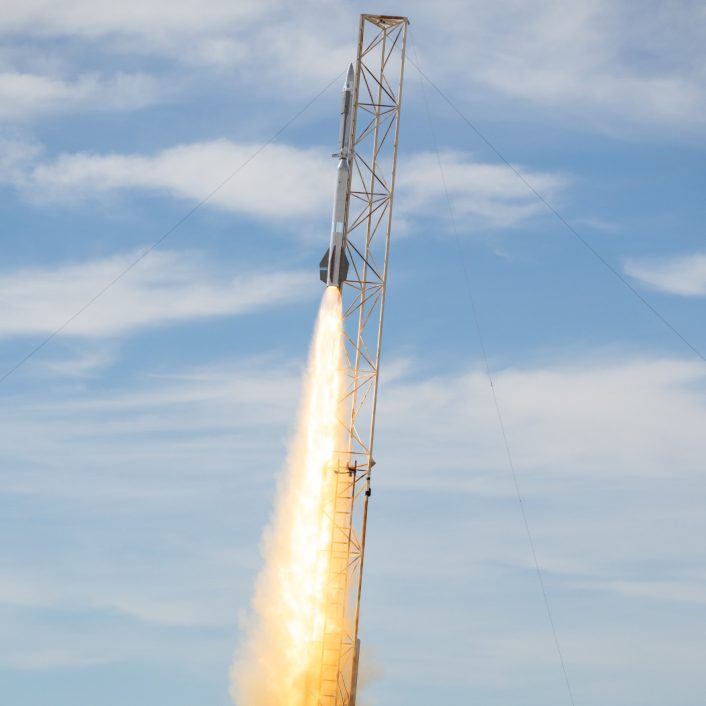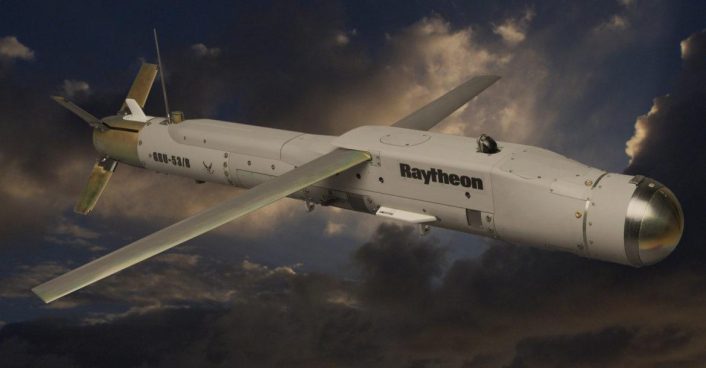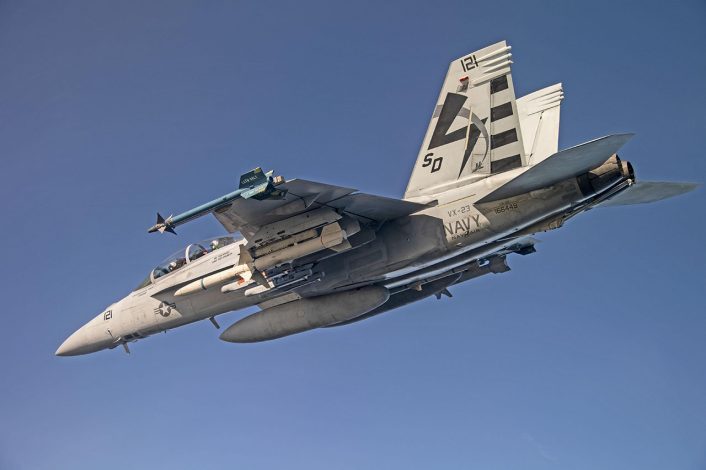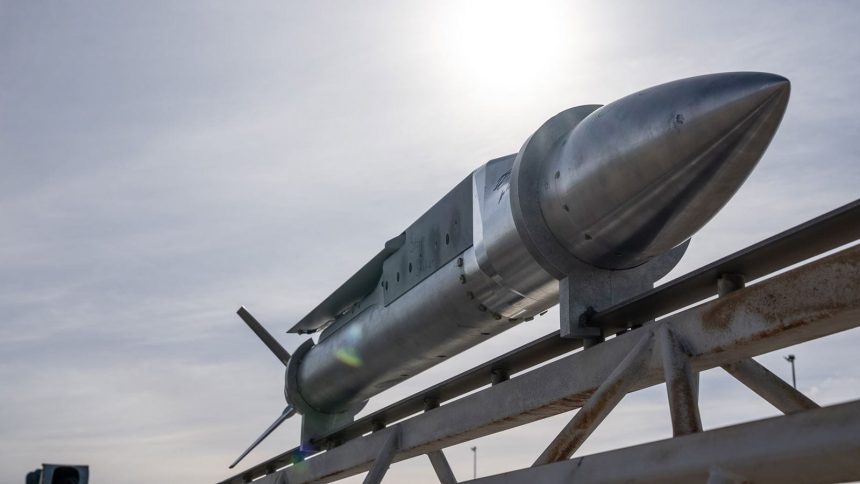The new variant was designed, developed and tested in 50 days, with the test in the Mojave Desert using a COTS rocket motor.
Raytheon has announced the testing of a new ground-launched variant of the GBU-53 StormBreaker munition. The company highlighted that it designed, developed and tested the new variant in 50 days.
The test was conducted at a private test range in the Mojave Desert during spring 2025, with a video accompanying the statement mentioning Mar. 22, 2025. Raytheon says the prototype was launched using a commercial off-the-shelf rocket (COTS) motor and was able to reach approximately 20,000 feet of altitude.
“Recent global conflicts have highlighted the need for a smart, ground-launched, precision strike weapon that can perform in GPS-contested areas,” said Sam Deneke, president of Air & Space Defense Systems at Raytheon. “StormBreaker is a composable weapon, which allows it to be customized to meet mission demands. Using the foundational components of air-launched StormBreaker allowed us to move faster than ever before, going from concept to test flight in under two months.”
The GBU-53 StormBreaker
The GBU-53/B StormBreaker, also known as Small Diameter Bomb Increment II, is one of most recent additions to the U.S. arsenal. Raytheon, now part of RTX, describes the GBU-53/B as a network enabled weapon, saying this is one of the key benefits of StormBreaker.

This capability is intended to give an aircraft the possibility to drop the weapon and then hand off its controls to another aircraft connected to the same network. This is considered critical for a JADC2 (Joint All Domain Command and Control) battlespace environment as the military aims to connect sensors, platforms and weapon systems for multi-domain operations.
The U.S. Air Force cleared the weapon on the F-15E Strike Eagle in 2020, making it the first aircraft able to carry the weapon. The F-35 will be able to carry eight StormBreaker weapons internally and eight externally, providing the 5th gen aircraft with the capability to hit moving targets in adverse weather, addressing a wide range of threats and scenarios.
Further versatility is added by the multi-effects warhead, which is equipped with shaped charge jets, fragmentation and blast charge effects, and an option for a delayed smart fuse. The total weight of the weapon is just over 200 pounds, with half of it being the warhead alone.
Another key feature of the GBU-53/B is its tri-mode seeker that employs imaging infrared and millimeter wave radar to see through fog, smoke and rain as the weapon glides over 45 miles to strike both fixed or moving targets on land or at sea. The other modes available for target acquisition are the more common semi-active laser homing and GPS/INS guidance.

A 50-Day Sprint
Raytheon says it has invested significantly in independent research and development, capital assets and facilities, and the acquisition of subject matter experts to accelerate the development of Ground-Launched StormBreaker.
Jon “Stormin” Norman, vice president of Raytheon’s Air & Space Defense Systems Requirements & Capability, first disclosed the ongoing work in an episode of The Fighter Pilot Podcast, a podcast run by former Top Gun Instructor Vincent “Jell-O” Aiello that explores the world of combat aviation, in an episode titled “The Future of Air Warfare: Weapons” released on Feb. 23. During the podcast, Norman confirmed that the weapon was self-funded by the company.
The new ground-launched variant covers the same target set as the air-launched StormBreaker with extended range and expanded offensive capabilities, says Raytheon. Details about the performance of the weapon have not yet been released, thus it is not possible to determine how much the ranges of the two variants would differ.
Considering the mention of the 50 days and the date of Mar. 22, 2025, in the video of the test, the start of the work on the new variant of the weapon can be put at the end of January 2025. It is unclear if the one in the video was the only test conducted, although the company mentioned in its statement that additional tests will be held throughout 2025.

Ground-Launching a Glide Weapon
Converting StormBreaker from an air-launched glide weapon into a ground-launched munition is not obvious. For once, since the original weapon is not powered, the ground-launched would need a booster to lift the weapon to sufficient altitude and speed before wing deployment and glide.
The physics of the launch would also differ substantially. The air-launched weapon would be already in a high-energy state thanks to the launching platform’s high speed and altitude, while the ground-launched variant would have to start from zero altitude and zero speed.
The use of the booster intrinsically increases the range of the weapon as it would accelerate and climb at a certain angle while already travelling towards the target. Thus, the final range would be given by the sum of the distance covered during the boost phase and the phase.
Another difference would be due to the targeting, as the ground-launched weapon would have to rely more on its sensors and possibly an operator to input approximate coordinates of the target that the StormBreaker would use until it can acquire the target on its own. However, with StormBreaker being a networked weapon, the use of a datalink would be another important possibility for the targeting.
The precedent: GBU-39 SDB and the GLSDB
StormBreaker’s ground-launch concept is not without precedent. Boeing’s GBU-39 Small Diameter Bomb (SDB) was designed as a lightweight, high-loadout glide munition for aircraft, and the GLSDB program, in cooperation with Saab, married the SDB to an M26 rocket motor to produce a ground-launched glide weapon with long reach and containerized launch options.
The GLSDB’s architecture – rocket boost, separation, wing deployment and glide to target – mirrors the mechanics Raytheon demonstrated. The weapon has some advantages, but also vulnerabilities due to the reliance on GPS/datalinks, which demonstrated highly susceptible to jamming, according to reports from the employment in Ukraine.
Where StormBreaker could differentiate itself is in seeker and network capability, as its tri-mode seeker and active networking – built to locate and engage moving targets in adverse weather – would make it more resilient to GPS jamming.
The comparison with the GBU-39 and GLSDB is also useful to get an idea of the range differences of the GBU-53 and the Ground-Launched StormBreaker. The GBU has a reported range of 60 nautical miles, while the GLSDB increases to 80 nautical miles.









